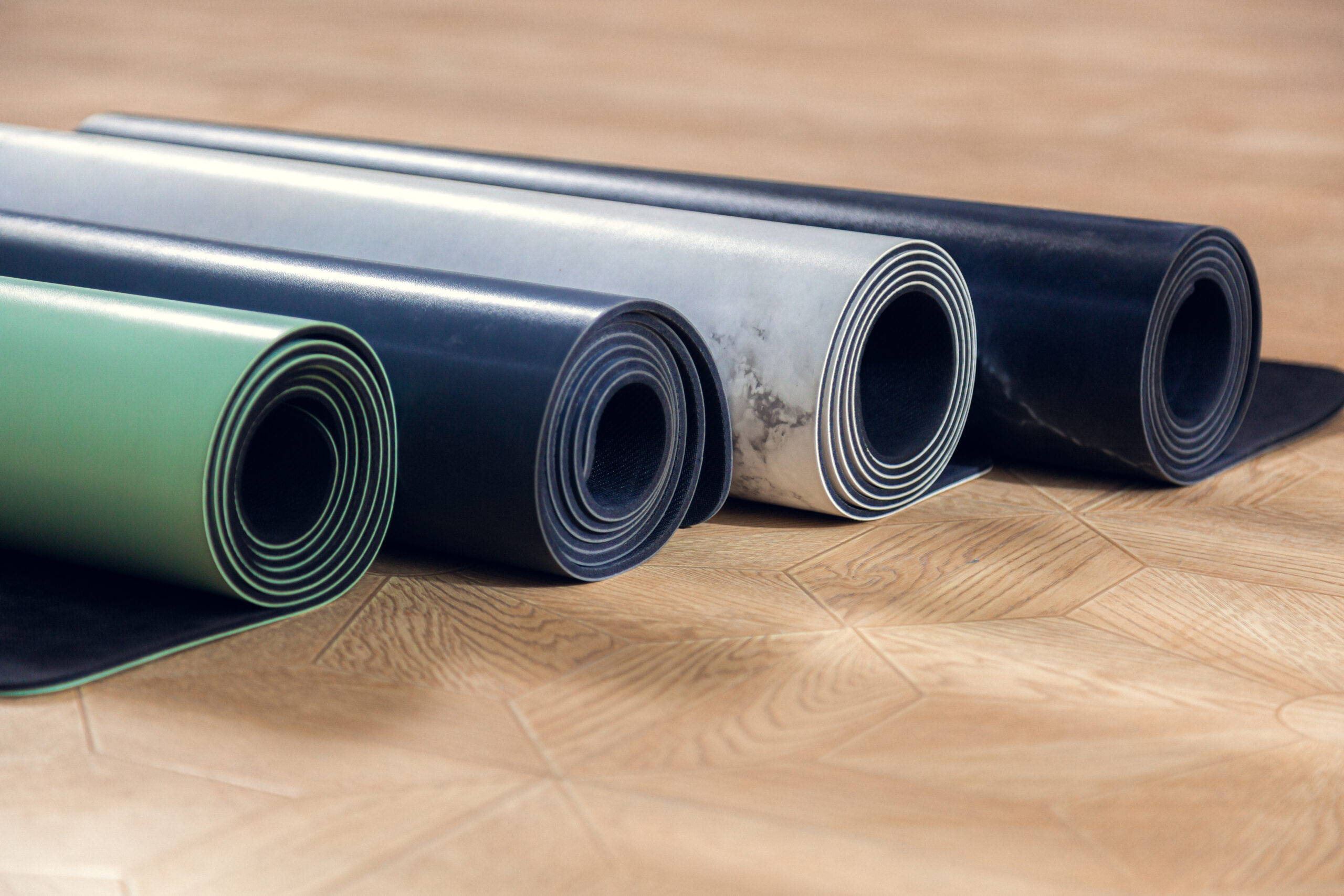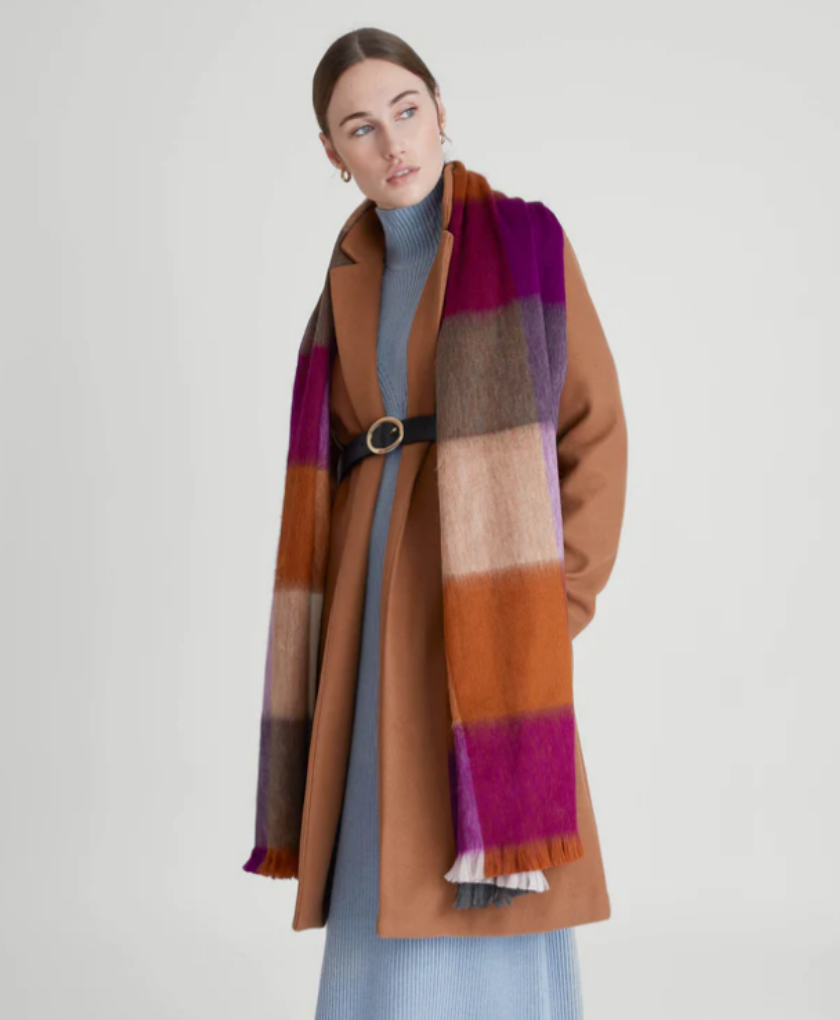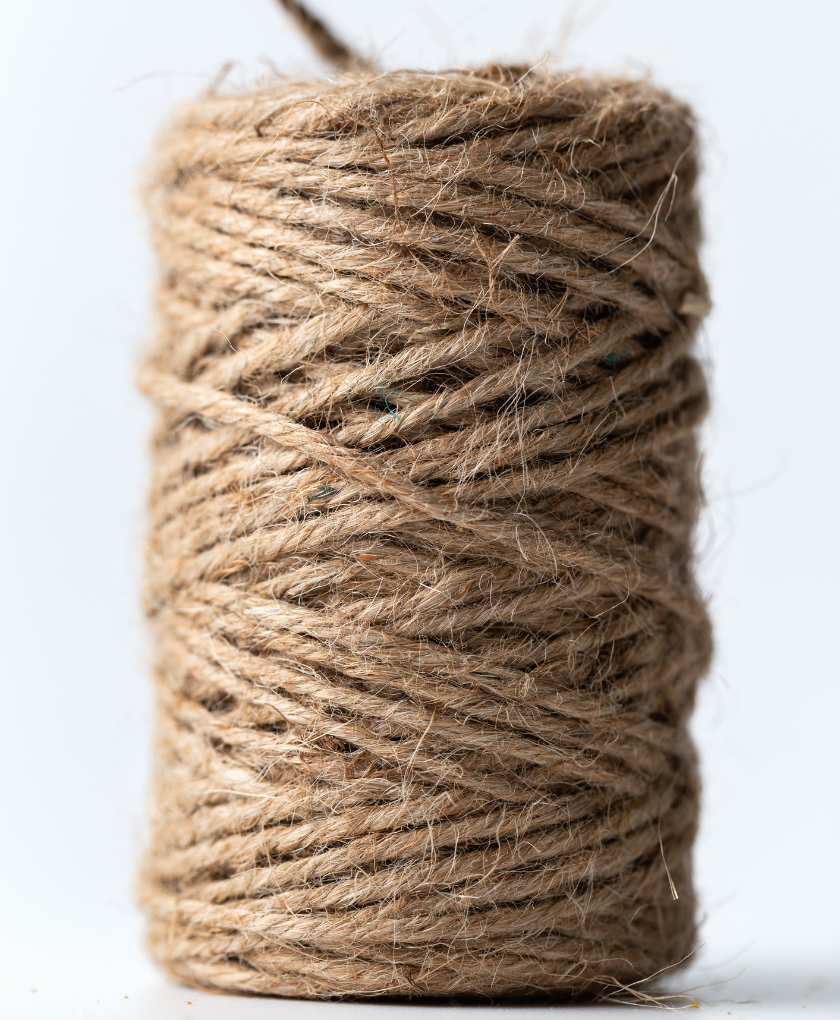Sharklet Techonologies: a new horizon for the healthcare industry
Your Guide To Suatainability: We Learn From Nature
17 october '22
Reading time: 5 minutes
Sharklet Technologies have found a way to replicate how sharks fight bacteria to increase health safety in hospital facilities. How does this revolutionary technology work and what are its benefits? Read more to discover Sharklet’s innovation.
Words by Shivani Karnik

Picture by Matt Waters
Increasing microbial resistance: an emerging challenge due to COVID
Just as human activities have suffered drastic changes due to COVID-19, the microbial world is also altered forever in its aftermath. With the growing consumption of antibiotics during COVID, even though such medicines have no effect against the coronavirus, our bodies have become resistant to them, becoming ineffective against some microbes specifically.
We are now becoming increasingly vulnerable to these dangerous, antibiotic-resistant bacteria called “superbugs” which are often found in hospitals. In fact, as per a study of COVID patients who died at a hospital in China, 50% were infected by another pathogen also. Currently, 7,00,000 people die each year due to drug-resistant microbes.
These microbes often spread from surface to surface. It is alarming that some bacteria like E. Coli and MRSA can last on a surface for several months! One solution to this is changing the texture of surfaces regularly in use or prone to cause infection, especially in hospitals. To do this, Sharklet has found an innovative method: mimicking sharks’ skin.
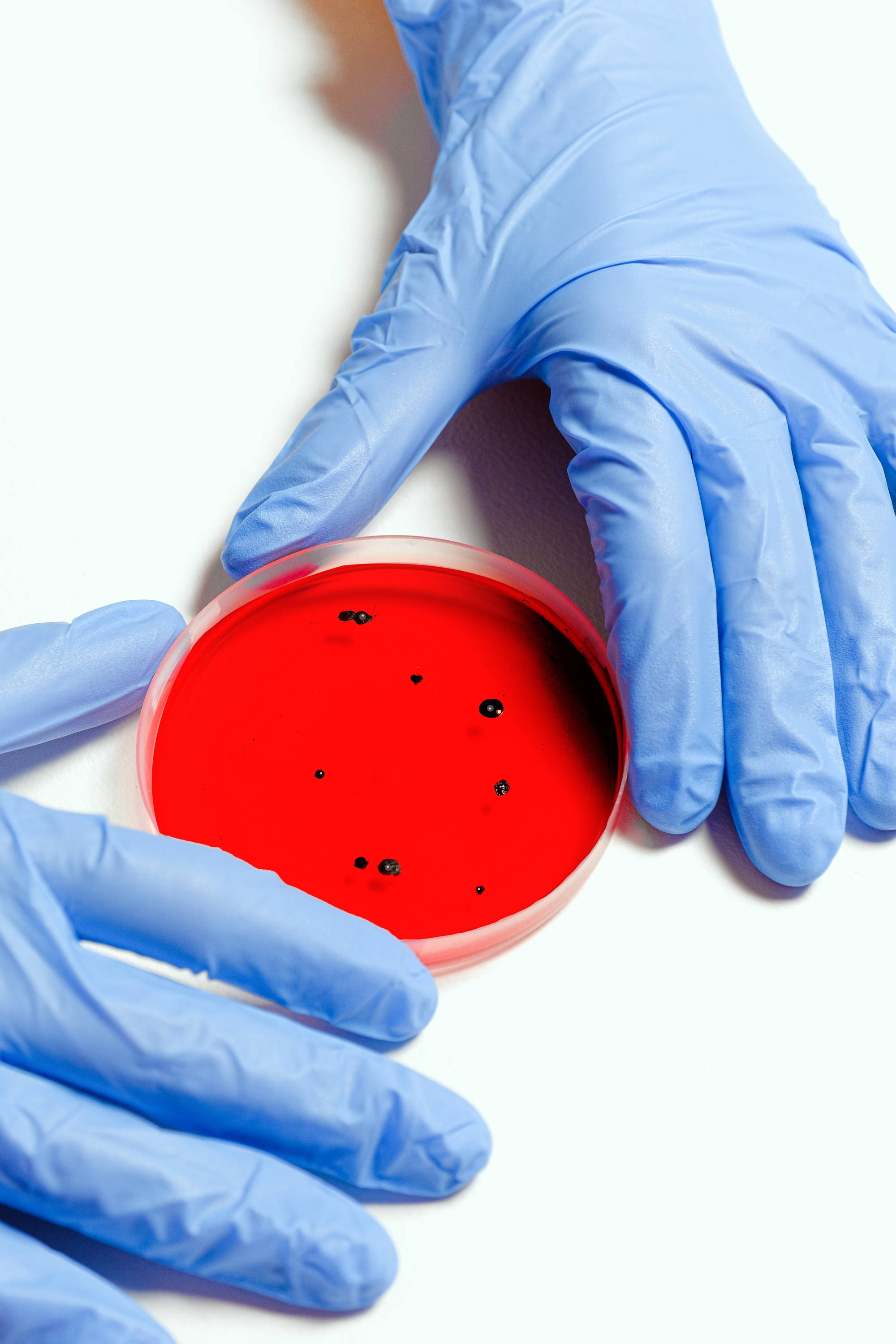
Picture by Anna Shvets
Seeking inspiration from our deep sea-warriors
Sharklet film was inspired by the fact that the unique texture of sharks’ skins prevents them from accumulating any biofilm on them. On an examination of the pattern, according to the team, it was found that their skin has a “distinct ridged diamond pattern”, which lowers the adherence of microbes to it and prohibits their multiplication. If these microbes, no matter how drug-resistant, fail to hold on to a surface then they either relocate or die.
The idea for using this pattern came from Dr Anthony Brennan, Professor of Engineering at University of Florida. Originally, the application of this idea was to protect ship hulls from green algae and barnacles, just as sharkskin does for sharks. But later, during an experiment by his student, they observed that even bacteria failed to grow on a petri dish lined with sharkskin. This opened avenues for diversification in fields beyond marine technology, including healthcare.

Picture by Daniel Torobekov
Tailoring nature’s knowledge for our benefit
While testing the sharkskin pattern, they realized that it was due to the ridges and contours on their skin that the bacteria failed to colonize. Since these ridges and contours provide higher tension and stress on the cell membrane of the bacteria and reduce the area of contact, it took the bacteria more energy to colonize.
However, copying this pattern was no easy task. The ridges on the surface were only 3µm in length and 2µm wide. But, with the help of FlexCon, an adhesive coating and laminating company, Sharklet was able to create an industrial sheet with this pattern. The manufacturing tools for creating molds to also replicate the pattern were provided by 10x Microstructures.
These partnerships enabled Sharklet to create two base patterns: standard and inverted. The standard protruding pattern has the effect of limiting bacterial migration. Therefore, it works best for medical devices like catheters. On the other hand, the inverted pattern is for highly used surfaces as the inverted ridges can prevent wear and tear. The two patterns are either used to create an antibacterial film or are molded directly into the surface.
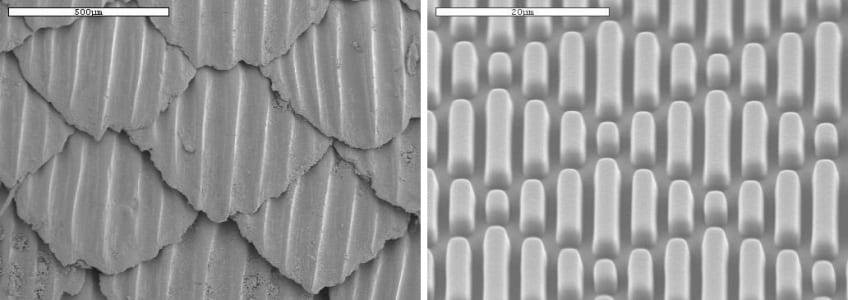
Picture by Sharklet Techonologies
Benefits of Sharklet film
Testing conducted with the Sharklet pattern proved that it is highly effective in preventing more than 90% of bacterial attachment, especially against bacteria antagonistic to humans, such as Staphylococcus aureus, MRSA, VRE, Pseudomonas aeruginosa and E. coli.
Moreover, Sharklet does this without using biocidal toxic chemicals, which is much-needed in high-risk areas like hospitals, with growing resistance to antibiotics in pathogens and the development of superbugs. In hospitals, although the Sharklet pattern can’t substitute washing and standard cleaning protocols, it can provide a safety net when such protocols fail.
This safety net can mitigate the staggering costs due to hospital-acquired infections, which account for more than $30 billion in excess healthcare costs each year. We need technologies like Sharklet film to alleviate this burden on our already strained healthcare sector. With no chemicals and a method inspired by nature, it is also bound to contribute to incorporating sustainable practices in healthcare.
